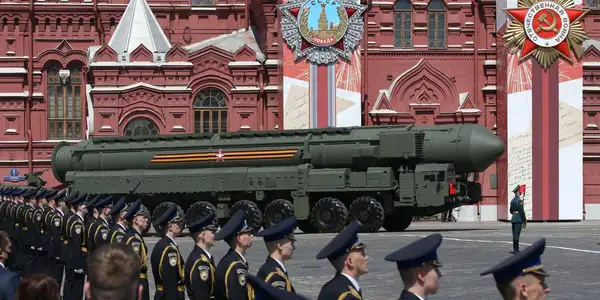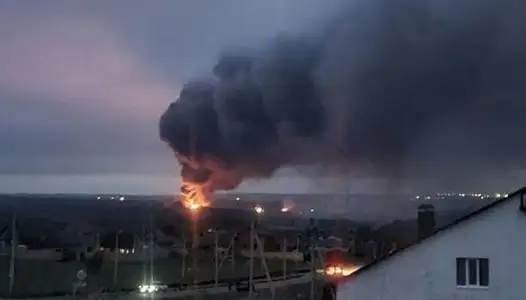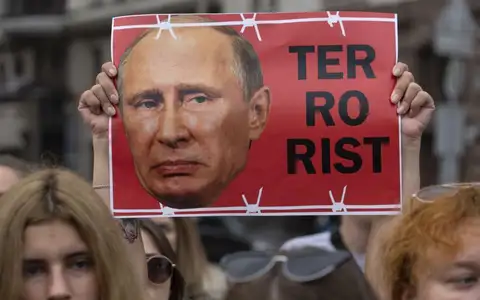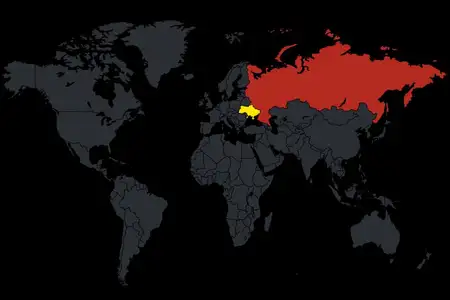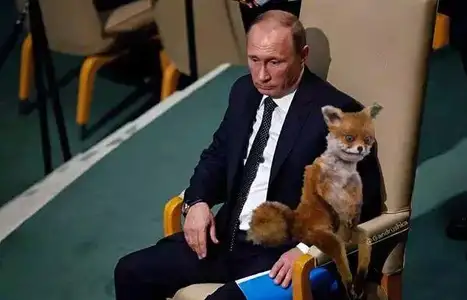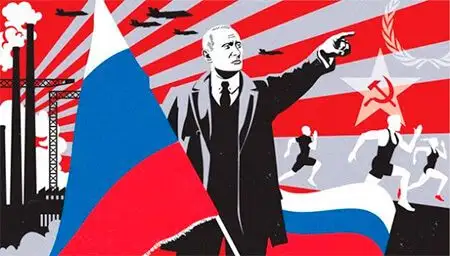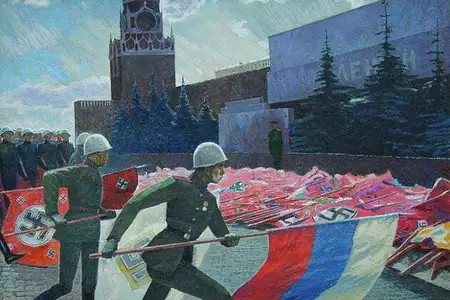Lukashenko’s treachery: Is a repeated attack from Belarus possible?
Since the full-scale invasion began, there have been conflicting signals from Minsk. But lately we can see a particular activation of the Belarusian military.
No matter how Lukashenko tries to deny his participation in Russia’s aggressive war against Ukraine, it is clear to everyone that Belarus (which is de facto occupied by Russia) has been supporting it in every possible way. And after the latest events in October, it will hardly be possible to deny it.
Everything that is happening looks like preparation for a renewed attack on Ukraine. Is it possible in the near future? Let’s align the latest events in Belarus and estimates of various experts concerning the reality of the Belarusian threat.

Russia’s main minion
To begin with, it is worth recalling the complicated political situation that has developed in the Republic of Belarus in recent years.
In the summer of 2020, mass protests erupted across the country after a controversial presidential election in which Alexander Lukashenko sought a sixth term in office. Through mass fraud and repression, he succeeded. Thus, at the moment, Lukashenko’s authoritarian regime has been ruling the country for 28 (!) years.
Neighboring countries Poland and Lithuania do not recognize Lukashenko as a legitimate president of Belarus, and the Lithuanian government has allocated a residence in Vilnius for the main opposition candidate Sviatlana Tsikhanouskaya and other members of the Belarusian opposition.
The European Union, Canada, Great Britain, the United States, and Ukraine as well do not recognize Lukashenko as the legitimate president of Belarus. Therefore, hereafter, by “Lukashenko” we mean “the self-proclaimed president who has usurped power in Belarus”.
The EU, the UK, Canada, and the US imposed sanctions against Belarus because of election fraud and political oppression during the ongoing protests in the country. Additional sanctions were imposed in 2022 after the country’s involvement in the invasion of Ukraine.
In parallel, there are processes of a gradual merger of Belarus with Russia, creating a so-called “Union State”, allegedly, as Putin says, “because of unprecedented pressure from the West”. In reality, this means a gradual restriction of Belarusian sovereignty.

The thing is that Russia has been subsidizing Belarus’ weak economy for decades through low-interest loans and heavily discounted supplies of natural gas and oil. To mitigate the consequences of the sanctions imposed on Lukashenko’s regime by the international community, Russia once again provided financial aid to Minsk. Thus, Putin has put the Lukashenko regime in a strong dependence on himself: the Belarusian dictator will be able to hold on to power only with Russia’s support.
The role of Belarus in Russia’s war against Ukraine
The Lukashenko regime in Belarus has been taking part in the war against Ukraine since the very beginning of the full-scale invasion. It was from the territory of Belarus that Russian troops attacked Kyiv at the end of February. From there, the Russian Federation also launched missiles at Ukraine. Lukashenko is still in the “passive-aggressive mode”, conducting endless military exercises and maintaining a highly hostile rhetoric toward Ukraine, experts say.

Map of Russian military activities in Belarus as of 15 March 2022 (Source)
Already on February 27, a fictitious referendum was held in Belarus, which resulted in the removal of clauses from the country’s constitution about Belarus’ neutrality and its intention to adhere to a nuclear-free status, and the addition of amendments that expand and strengthen Lukashenko’s power.
It is important to note that Lukashenko’s decision to support and facilitate Moscow’s aggression against Ukraine went against the sentiments of the country’s residents from the very beginning. According to Chatham House, an independent political science institute in London, in the spring of 2022, 79 percent of Belarusians believed that not a single Belarusian soldier should die in Putin’s war with Ukraine. More than half thought Belarus should remain neutral.
“Belarus is becoming increasingly subservient to Russia, demonstrating again President Lukashenko’s willingness to act against the interests of his own people in order to curry favor with Moscow and remain in power,” State Department spokesman Ned Price noted in April.
Over the following months, there were contradictory signals from Minsk. About once every month and a half to two months, there were reports in the media space that the Belarusians were planning to invade Ukraine, the Ukrainian Main Directorate of Intelligence (MDI) emphasized.
And now, in October, the activity of the enemy on the Ukrainian-Belarusian border has increased. Does this mean that we should be prepared for a real invasion or is this just another diversionary maneuver?
Activation on the Belarusian side in October
On October 4, Lukashenko actually acknowledged Belarus’ participation in the Russian aggression against Ukraine. “As for our participation in the “special military operation” in Ukraine, we take part there. We don’t hide it. But we don’t kill anyone. We don’t send our military anywhere. We don’t violate our obligations,” Lukashenko said.
“Our involvement is to prevent this conflict from spreading to the territory of Belarus, first of all. Secondly, to prevent a strike on Belarus under the cover of a special military operation by Poland, Lithuania, and Latvia. As I said, no one will shoot the Russians in the back from the territory of Belarus. This is our participation,” the dictator added.

Furthermore, on October 10, Lukashenko stated that he had agreed with Vladimir Putin to deploy a joint regional grouping of troops “due to the escalation on the western borders of the Union State”.
“Due to the escalation on the western borders of the Union State, we have agreed to deploy a regional grouping of the Russian Federation and the Republic of Belarus. If the threat level reaches the current level, as it is now, we’ll start engaging the grouping of the Union State,” the statement of the Belarusian dictator said.
According to him, the Belarusian armed forces form the basis of this grouping. Furthermore, Lukashenka stated that thousands of Russian armed forces troops would soon arrive in Belarus, and there would be no mobilization in Belarus itself.
At the same time, Anatoly Lappo, Chairman of the Belarusian State Border Committee, stated that Ukrainians had blown up almost all the border bridges, planted anti-tank mines on the roads, and that the border guards were reinforced by the soldiers of the territorial defense. The official said that the Belarusian border guards are “experiencing pressure” from the Ukrainian side.

On October 11, the Ukrainian MDI stated that Russia was planning to send 40 Iranian kamikaze drones and 13 trainloads of ammunition to Belarus. Thus, saturation of Belarus with weapons is in full swing. More recently, Iranian instructors were spotted in Belarus coordinating the launches of Shaked-136 drones at infrastructure facilities in the Kyiv region and the northern and western regions of Ukraine.
On October 14, Belarusian Foreign Minister Vladimir Makei said that the country was introducing an “anti-terrorist operation” regime, again because of an alleged threat from neighboring countries. “Indeed, there was information that provocations were being planned on the part of some neighboring states, which were almost related to the seizure of certain areas of Belarusian territory,” Makei said.
In addition, on October 19, it became known that in the territory of Belarus there are activities of hidden mobilization. Thus, men in Belarus began to receive draft notices en mass, demanding to come to the military registration offices. The Ministry of Defense of Belarus reassures people saying that the notices are allegedly served for the purposes of “data accounting”. It reminds of the situation with the hidden mobilization in Russia before the official announcement of the partial mobilization on September 21.
Belarus also continues to provide its territory for launching ballistic missiles and drones. Pontoon bridges are being brought in and support units, including military medics, are being trained.

On October 20, satellite images were published that show the enemy gathering forces on the Belarus-Ukraine border. The images show that sand mounds are being built in the northern part of the Zyabrovka airfield. At other sites, radar stations are installed on similar embankments, which are used to identify targets and guide missiles. It is also known that Russian troops and new equipment are arriving there.
More and more evidence is coming in that Belarus continues to help Russia with equipment in the war with Ukraine. On October 21, it was reported that in recent weeks alone, official Minsk transferred at least 70 T-72A tanks and dozens of Ural trucks to Moscow.
And on October 23, it was reported that Belarus had completely closed access to video from cameras on the roads of the country.

So, what is the probability of a new attack?
On October 21, the Armed Forces of Ukraine (AFU) appealed to the people and military of Belarus not to allow the country’s leadership to draw them into Russia’s dirty war against the Ukrainian people. Lukashenko is trying to cover up the possible participation of the armed forces of the Republic of Belarus in the war against Ukraine with the so-called “common grouping” because it is it, and not the army of Belarus itself, that will receive the order to attack. “Even if Belarusian servicemen refuse to fight against the fraternal Ukrainian people, the Russian part of the common grouping may pull them along. If the army of Belarus supports the Russian aggression, we will respond. We will respond as harshly as we respond to all occupiers on the territory of Ukraine, using the entire arsenal of weapons, with strikes on military facilities on the territory of your country.”
Ukraine does not want this, so the AFU General Staff addressed the Belarusians directly, urging them not to carry out criminal orders and not to share responsibility for war crimes already committed by the Russian army in Ukraine.

The Ukrainian MDI concludes that the illegal Belarusian regime is becoming increasingly aware of the dangers of its decision to openly join Russia’s large-scale armed aggression against Ukraine. In this connection, Lukashenko is trying to continue making loud statements and to show Putin that by his actions he is fulfilling his allied obligations, diverting a significant part of the AFU reserves from their possible use on the front in the east and south of Ukraine. In addition, under the guise of intensifying mobilization activities, the Belarusian special services are covertly studying the possible reaction of society and its readiness to take part in protest events. This demonstrates that the self-proclaimed Belarusian authorities are not sure that there will be broad support among the Belarussian population of the decisions to involve their country in Russia’s military ventures.
For their part, the leaders of the European Union condemned the actions of Belarus and Iran, which became Russia’s accomplices in its aggressive war against Ukraine, and demanded that they immediately stop helping the aggressor country.
On the same day, Lukashenko declared, in his usual manner, that Belarus “does not need any war”. “Pay no attention to this howling. We are not going anywhere today. No war for today. We do not need it. We need to calm down. Everyone must do his own job if we want that there is no war,” the self-proclaimed president said. As if the war has not been going on for months already, with Lukashenko’s active support!
Amid all this, the General Staff of the Armed Forces of Ukraine stated on October 20 that the threat of a repeat offensive from the territory of Belarus is growing, but the direction of the offensive may be reversed west of the Belarus-Ukraine border.

Despite the General Staff’s warning, analysts at the American Institute for the Study of War (ISW) believe that the risk of a Russian offensive from Belarus to northern Ukraine remains low.
White House National Security Council spokesman John Kirby confirmed ISW’s October 20 assessment that Belarus could concentrate manpower on the border to anchor Ukrainian forces in northern Ukraine and prevent their deployment to the area of active operations in southern and eastern Ukraine.
British Intelligence reaches a similar conclusion in its October 21 review. It recalls that in mid-October Alexander Lukashenko announced the deployment of a grouping of 70,000 Belarusian and up to 15,000 Russian troops, and subsequently Minsk published a video of the arrival of Russian troops. “However, to date it is unlikely that Russia has actually deployed a significant number of extra troops into Belarus,” British Intelligence notes.
On October 24, Kyrylo Budanov, head of the Ukrainian MDI, said that there is no threat of an attack on Belarus now, but it potentially remains.
As for the possible attack from Belarus not against Kyiv, but in the direction of the western regions in order to interrupt the supply lines of Western weapons to Ukraine, experts note that even if such plans exist, they are unlikely to affect anything significantly, because there are other supply channels in addition to these ones. In general, everything indicates that they will not attack directly, but provocations are possible, including with the purpuse to distract Ukrainian forces from other directions.
Ukraine and partners at the ready
In any case, the Ukrainians are preparing for a possible offensive. The AFU and border guards have not only reinforced all northern lines, but are constantly training to repel enemy attacks.
The Belarusian Kastuś Kalinoŭski Regiment, formed of Belarusian volunteers and operating as part of the AFU, is also preparing. This unit successfully carries out combat assignments in different parts of the front, and regiment commander Dzianis Prokharau considers its main task to be the protection of the northern borders of Ukraine, if Lukashenko, under pressure from Putin, launches a ground offensive.
“Our duty is to go out there (to the northern borders – ed.) and stop all these non-humans who are coming here with war. The position of many Belarusians is not to participate in this whole Putin movement. That is, the majority does not agree to fight against the Ukrainians,” Prokharau emphasizes.

At the same time, two multinational military exercises of NATO countries are taking place in Poland and Lithuania near the borders with Russia and Belarus respectively. In Lithuania, there are “Iron Wolf” maneuvers, in which about 3.5 thousand military men and 700 units of equipment from ten NATO countries take part. In Poland, in the region of Rzeszów, which has become an important logistic hub for the transfer of weapons to Ukraine by the NATO member states, there are “Puma” exercises. Apart from the Polish army, the armies of Slovakia, the Czech Republic and Hungary, as well as some units from Great Britain and the United States are taking part in the maneuvers.
Former Ukrainian Ambassador to Belarus, diplomat and politician Roman Bezsmertny is convinced: it is better to be prepared for the worst case scenario this time. Lukashenko declared a “counterterrorist operation” not for nothing.
“Sooner or later, both Putin and Lukashenko will activate the armed forces, including those of the Republic of Belarus, against Ukraine,” says Bezsmertny.
So, despite the assessments of Western experts, who allegedly reassure us, it is necessary to be fully prepared for various scenarios and in no case underestimate Lukashenko and his treachery.
The sooner the entire civilized world understands that it is impossible to negotiate with these dictators, and that they must only be defeated, the sooner the war will be over.
Anastasiya Glotova


















